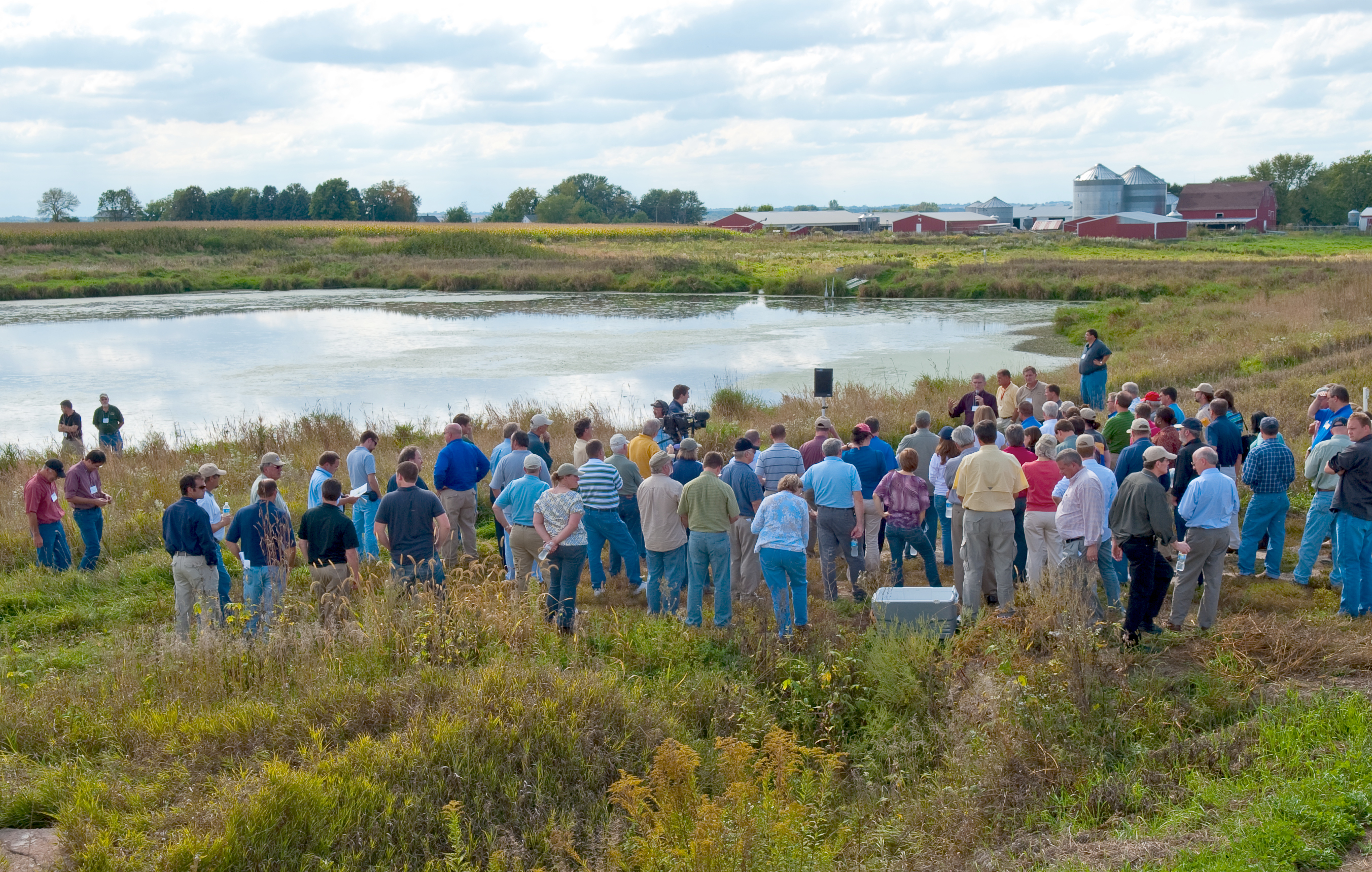
Wetlands, A Win-Win for Water Quality, Wildlife
Wetlands targeted to intercept water from heavily tiled cropland in Iowa have been called “heavy lifters” in the effort to carry Iowa’s nutrient reduction strategy. These wetlands can both improve water quality and provide habitat for wildlife.
The Iowa Conservation Reserve Enhancement Program (CREP) provides incentives to landowners to voluntarily restore wetlands targeted for water quality improvement through a joint effort of the Iowa Department of Agriculture and Land Stewardship (IDALS) and the USDA Farm Service Agency cooperating with local Soil and Water Conservation Districts.
Bill Crumpton, a professor in Iowa State’s ecology, evolution and organismal biology department whose research provided the technical foundation for the program, has spent the last 10 years measuring the water quality benefits of these wetlands.
“This is a successful program. It’s effective and it’s scalable,” Crumpton says.
The results demonstrate that the wetlands are very effective at reducing nitrate loads across a wide range of conditions. Microorganisms that live in wetlands convert nitrates into a harmless gas
and on average, a wetland that’s 1 percent of its watershed area—for example, 10 acres of a 1,000-acre watershed—can take out 50 percent of the nitrates.
“In the science panel of the nutrient reduction strategy, we couldn’t get to a 45 percent reduction (of nitrates) without a lot of targeted wetland restorations,” he says. “You can take land out of production, and you can get there. But retiring almost half of the crop ground in Iowa is not an attractive alternative.”
Even with better nutrient management, it is likely that 150,000-300,000 acres of wetlands, perhaps 1 percent of all Iowa cropland, would be needed to get to the 45 percent nitrate reduction target in the Iowa Nutrient Reduction Strategy, he says.
Crumpton says wetlands have several advantages.
“Wetlands are permanent structures. We make a commitment once and then we have that capacity for generations,” he says. “In addition, wetlands create sorely needed habitat and recreational opportunities.”
Kent Schwartz calls the CREP wetland on 18 acres of his land near Gilbert a “win-win-win,” benefitting taxpayers, those studying wetlands and the local environment. As the landowner, he enjoys the habitat created for wildlife.
“Stewardship of resources is important to me,” he says. “The CREP site has provided me with a view into the world of conservation, ecosystems, ecology and public-private partnerships in environmental protection. It has been a resource for learning and local enjoyment, and my five children have a better understanding of stewardship because of this project.”



